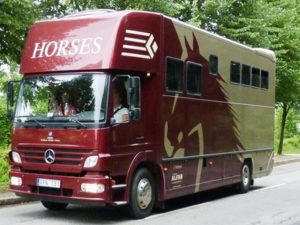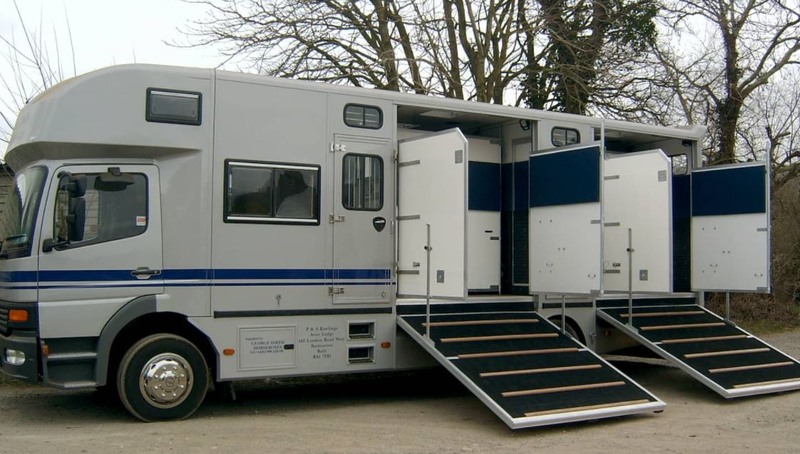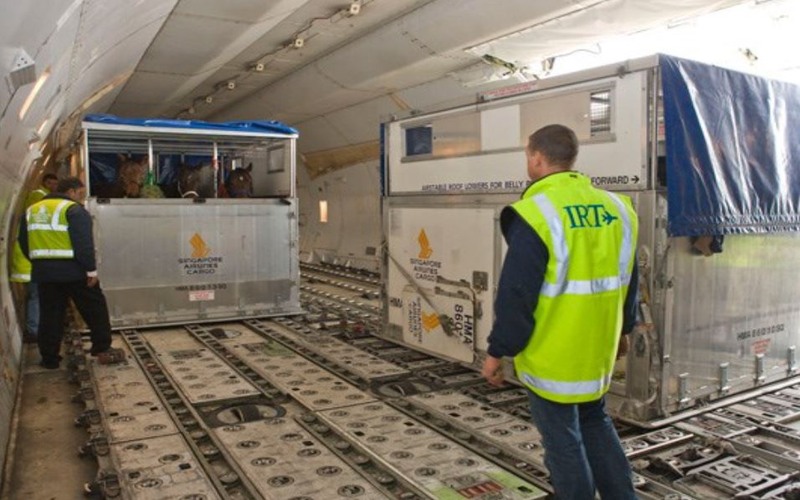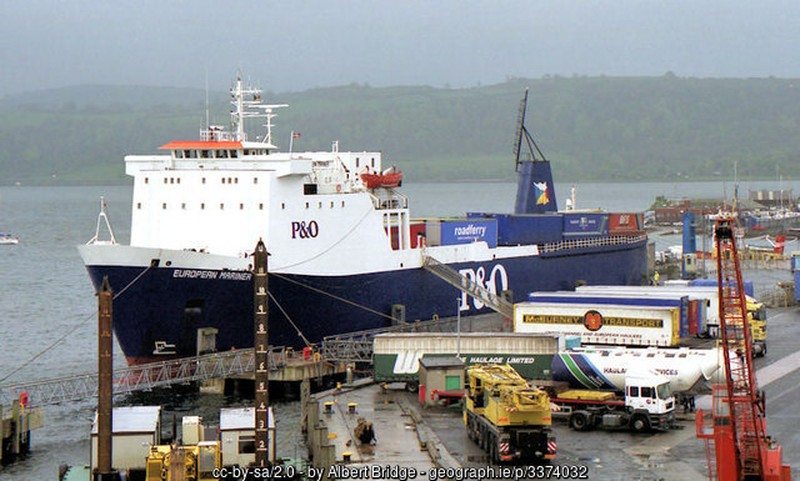How Are Racehorses Transported?
When a punter makes a bet on a race, they are probably going to be thinking about the animal’s recent performance history, the going, the other runners, etc.

They probably don’t think too much about how the horse got there.
This ‘behind the scenes’ stuff might not have too much of an impact on race day, but it’s interesting to understand how the cogs turn to get the races run in the first place.
Horses are gentle and emotional animals, and they have very delicate feet and legs which are obviously extremely important in a race, so they need to be well looked after.
This could throw up all manner of issues when it comes to getting them from A to B, so how has the industry risen to this challenge?
How do they ensure the safe passage of all of these horses travelling around the country, and sometimes to other countries, to race at different meetings?
Transporting Horses by Road

Most of the time, especially in the UK, it is possible to ship race horses around by road. Race tracks tend to be in places that are fairly easy to get to given that they also need to attract a crowd to come and watch, so the locations and access are good.
In terms of the vehicles themselves though, these have changed a lot over time.
Way back before engines came along, the horse used to be the fastest mode of transport, so there was little need for a device that could transport them – they were simply ridden or led to their destination.
It is thought that the first horse transportation vehicles were used by the fire brigade, who used horses to get to fires quickly but also needed to transport injured horses to a local vet from time to time.
This probably would have been little more than a wooden cart, but it was the start of the journey to the luxurious technology laden vehicles that are used today.
Indeed, there are strict rules and regulations when it comes to transporting horses. The vehicles must be constructed to:
- avoid injury or suffering and ensure the animal’s safety
- protect the animals from bad weather, extreme temperatures and adverse changes in climate
- prevent the animals escaping or falling out
- ensure the air quality and quantity appropriate to the species transported can be maintained
- provide access to the animals to allow inspection
- minimise the leakage of urine or faeces
- provide a means of lighting sufficient for inspection of the animals
- provide sufficient space inside the animal compartment to ensure that there is adequate ventilation above the animals when they are standing in their natural position
- carry suitable equipment for loading and unloading
- provide anti-slip flooring
- provide partitions strong enough to withstand the weight of the animals and allow them to withstand the stresses of movement
- ensure fittings are designed for quick and easy operation
- constructed, maintained and operated so as to allow appropriate cleansing and disinfection
There are also space restrictions as follows:
| Horse Type | Space Requirements |
|---|---|
| Adults | 1.75m2 / 0.7 x 2.5m |
| Age 6-24 Months | 1.2m2 / 0.6 x 2m |
| Age 6-24 Months Over 48 Hr Journey | 2.4m2 / 1.2 x 2m |
| Ponies Under 144cm | 2.4m2 / 1.2 x 2m |
| Age 0-6 Months | 1.4m2 / 1 x 1.4m |
So anyone who was picturing and old fashioned round topped horse box should think again, because these days trucks by the likes of Mercedes are designed specifically for the haulage of horses, complete with calm lighting, rubber floors topped with straw and saw dust, and excellent ventilation – companies like the NRT have whole fleets of them.
The horses are safely strapped in and can even feed enroute and there is built in CCTV so the people in the cab can keep tabs on the precious cargo.
Usually these vehicles will carry several horses at once, each with their own closed off section but space to see the horse next to them, just like a smaller version of a stable, and some even have front and rear air suspension, allowing the vehicle to adjust its height from the floor to make the horse’s entrance and exit easier.
Of course some makes and models of transport vehicles are better than others, but even the older or cheaper ones are pretty impressive these days.
Transporting Race Horses by Plane

Larger countries such as America have a greater need for this sort of service, although horses travel from the UK to race or compete elsewhere too. There have also been horses which have travelled to other countries to stud, and with thousands of horses travelling through the skies each year the industry is perfectly capable of getting horses airborne safely.
How it works is, the horse is guided into a portable container that is built a lot like a stable, with either one, two or three compartments depending on which class the horse is flying.
Yes, horses can travel in first class, business class, or economy, just like us humans.
They are actually loaded on the tarmac and the containers/horseboxes are then lifted up to the plane using a hydraulic platform, before being wheeled inside and locked into place on the deck of the plane.
The floor on non-passenger planes is specially designed for freight, so anything big and heavy that is being transported needs to be locked down to the floor to stop them sliding around, and horse boxes are no exception.
There will also be a team of grooms and even a vet to travel with the horses, keep them fed, calm and comfortable, and make sure everything is handled properly at the other end.
A few other flying horse facts include:
- Horses need to be quarantined at each end of the journey, and will be ‘buddied up’ with the horses they are going to be traveling next to.
- It is recommended for horses to be de-shoed before they fly.
- Horses tend to lose between 5kg-15kg during a long flight, despite being fed.
- ‘Shipping fever’ is the biggest concern, but the grooms are trained to look for early signs of this and get on top of it quickly.
Horses can get jet lagged as well as stressed, so their care needs to be spot on if they are going to race a few days after they arrive.
As well as all of this, pilots with horses on board are made aware, and their approach to lift off and touch down is gentler because of it.
For instance; they will use the full length of the runway and keep the take off and landing as smooth and steady as possible, climbing at a shallower incline than they might if they just had people on board, who can deal with a steeper climb.
It’s not cheap though – it can cost around £10k to get a horse across the pond, and that’s just the flight costs.
Transporting Race Horses by Boat

It is also possible – and cheaper – to ferry horses around on ships, although this isn’t all that common anymore as the journeys also tend to take longer.
Obviously, the less time a horse is in transit the better; race horses should be resting in stables, out grazing or training.
It was common in days gone by but air travel changed all of that. Nevertheless, if horses are shipping by sea, it happens in a similar way to air travel.
Horses are housed in special containers built to look like stables, and since there is more space on a ship and no turbulence or altitude to deal with, the journey might also be smoother barring any particularly rough seas.
One of the same challenges is keeping the horse from getting sick.
Horses will likely get ill if they cannot or do not put their heads down, because when they do this (when grazing in a field for instance) they naturally drain out impurities.
For this reason horses are encouraged to eat and drink from the ground level when travelling, as a combination of confined spaces slowly but surely filling with bacteria from faeces and urine, poor ventilation, and having their heads up the whole time, is a quick route to illness.
Shipping horses by boat isn’t an ideal way of doing things, and it’s unlikely that a race horse owner would choose this option unless there was literally no other way.
